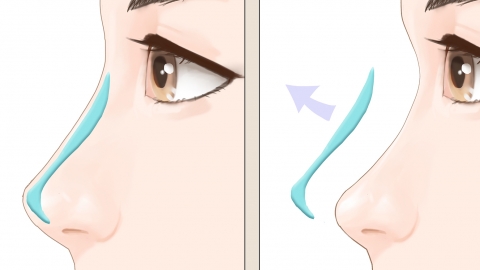What should I do if my nose implant is still loose three months after the surgery?
In general, ePTFE rhinoplasty improves the nasal appearance by surgically elevating the nasal bridge and reshaping the nasal tip. The general reference price for ePTFE rhinoplasty is 5,000-30,000 yuan per session. Improvement is usually noticeable 3-6 months after surgery, but symptoms such as swelling and pain may occur. Three months after ePTFE rhinoplasty, the implant may become loose, which could be related to improper postoperative care, incomplete integration of the ePTFE material, superficial implant placement, prosthesis infection, or implant rejection. It is recommended to seek timely medical attention and follow the doctor's guidance for general treatment or medication. Detailed analysis is as follows:

1. Improper postoperative care
Inadequate postoperative care after ePTFE rhinoplasty may prolong the recovery period, leading to instability of the ePTFE implant at three months. It is recommended to strictly follow medical advice for postoperative care, avoiding external impact or frequent touching of the nose.
2. Incomplete integration of ePTFE material
After implantation of the ePTFE material into the nose, it requires time to integrate with the surrounding tissue. If the integration is incomplete, it may cause the ePTFE implant to become loose. It is recommended to observe and wait; over time, the ePTFE material will gradually integrate with the surrounding tissue, forming a stable structure.
3. Superficial implant placement
If the ePTFE implant is placed too superficially without reaching the deep subfascial layer of the nasal dorsum, it may cause implant looseness. Under a doctor's guidance, revision rhinoplasty can be performed to reposition the ePTFE implant into the deep subfascial layer of the nasal dorsum, allowing for tighter integration with surrounding tissues and enhancing stability. The general reference price for revision rhinoplasty is 5,000-60,000 yuan per session, with improvement typically noticeable 1-2 months after surgery, although symptoms such as mild pain, swelling, and bruising may occur.
4. Prosthesis infection
Failure to maintain hygiene after surgery may lead to bacterial invasion of the wound, causing prosthesis infection. Infection-induced local inflammation can affect the integration of the ePTFE implant with surrounding tissues, resulting in implant looseness. Symptoms usually include redness, swelling, pain, and fever. Follow medical advice for treatment with medications such as amoxicillin capsules, cefixime granules, or erythromycin ointment.
5. Prosthesis rejection reaction
The patient's immune system may react to the ePTFE material, causing a rejection response. This reaction can lead to local inflammation and edema, affecting the stability of the ePTFE implant and potentially causing symptoms such as pain, itching, and skin breakdown. Follow medical advice for treatment with medications such as dexamethasone acetate injection, hydrocortisone injection, or loratadine capsules.
During the postoperative recovery period, it is recommended to follow medical advice for postoperative care, maintaining cleanliness and dryness of the wound to avoid infection. Additionally, avoid strenuous activities and external impact to prevent implant displacement or damage.




